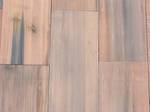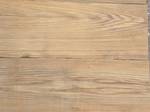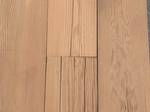Picklewood Siding Species Available
Pickle vats have been manufactured in many different locations for the past 150 years. The vats are constructed from different species, depending on the time and place of original manufacture. The following species are available in Trestlewood's inventory of pickling vat parts.
| Redwood is the perfect pickle vat material because it is resistant to rot and is clear of knots which would become loose and cause the vats to leak. Redwood was the species of choice for vat parts manufactured on the west coast while the old growth redwoods were plentiful. When the old growth redwoods became unavailable, the vat manufactures turned to other species. |
| Cypress is another perfect pickle vat material. It is extremely resistant to decay and clear of knots. Quality old-growth cypress was found in the tidewater regions of the southern United States. For vats produced in the South, Cypress was the species of choice. Quality old-growth cypress is now unavailable and more recent vats have been constructed with other species. |
| Douglas Fir replaced redwood and cypress as the main species of vat construction. Douglas fir has durable, straight grain and was a plentiful, cost effective replacement for redwood on the west coast when the redwood played out. While Douglas fir is still plentiful, it is harder to source tight grain, clear material that is available in reclaimed pickle vats. |
| White Cedar was generally used to replace damaged vats and damaged pieces in the Upper Midwest U.S. and Ontario, Canada. Cedar vat parts tended to be thicker because cedar has knots and the extra thickness helped ensure that the vats would not leak over time. Cedar is generally available only in limited quantities. |




